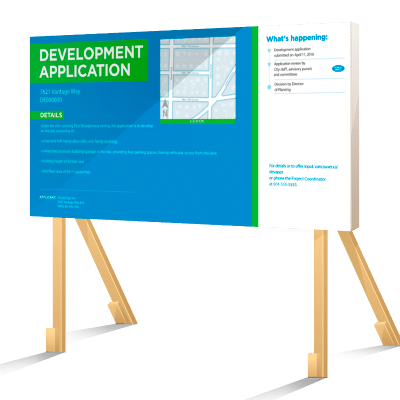Applying for development in the city of Brampton requires you to adhere to the Planning Act for all development done in Ontario. Directed by the Planning Act, an overall master-plan document called the Official Plan is used as a guide for many development and infrastructure decisions.
In order to make the application for your development easier, we’ve listed the steps you need to take in order to get your development project going and explain how and when Simple Sign can help facilitate this process for you.

How to Apply for a Development Permit in Brampton
Step 1: Attend a Pre-Development Application Consultation
A consultation is required with the city staff before submitting an application, where the basic proposal information for your project is required. Review the City’s official Information Package for this consultation before your meeting. At the end of this consultation, you will be given a Checklist to help you prepare for the formal application. Once the formal application is ready to be submitted, you are required to contact the Planner assigned to you during the consultation to request for an appointment to submit your application, and confirm the application fee.
Step 2: Application Review Period
Your application will then be reviewed in detail by the city staff to either assign it a “complete” or “incomplete” status within 30 days of submission, and provide you with details for what is missing. Once your application has been approved, it will be reviewed by the Ward Councillors, internal Divisions/Departments and external agencies and sent back to you with their comments within a period of 30 days from mailing.
Step 3: Attend Public Open House
A public informal open house may be held depending on the general public’s response to your development plan, where the application is presented and comments or concerns are discussed. In accordance with the City’s Official Plan, a Public Meeting is also mandatory, where persons assessed in respect of land to which the proposed applies and within 240 metres of the subject property as shown on the last revised assessment roll will be notified of the meeting.
Step 4: Install Development Signage
A majority of development applications require you to notify the public of your plans, a notice sign is used and commissioned by the applicant.
At this point, the City will request for the applicant to install one or more development application signs on their property that notifies other landowners and community members of your plans, and that an application has been submitted.
The City will inform the applicant an outline of how many signs are required and also the exact text which should be included on the development application sign(s). This process often means dealing with the hassles approval, dealing with sign shops and the annoyance of building frames to display your signs properly.
The team at Simple Sign can use this letter from the city planner to create the graphic design for the sign and install the development sign quickly and at a competitive price point.
Simple Sign is also able to proof any development sign information to ensure it meets requirements and submit sign information directly to the City for approval.
We guarantee the installation of development signs within 3 business days, removing the burden of handling signage design and installation from your busy schedule.

Step 5: Review Recommendation Report
A Recommendation Report will be written with the applicant, city staff, community organizations and the general public to address and identify all issues in relations to the application. The reports will establish the Department’s position to the application, which will either be in approval or refusal. If approved, it may include conditions that must be satisfied before the adoption of the official plan is amended by the Council. All individuals involved or are interested must request to be notified for the internal process of the application.
Step 6: Issuance of Development Permit
After all of the requirements for your project have been met if you had a conditional approval, a development permit will be granted for your project.
If the application is refused, the applicant can appeal the application to the Ontario Municipal Board. If no appeals are received after notifications of the decisions were sent, the Official Plan or Zoning By-law Amendment will come into effect.


